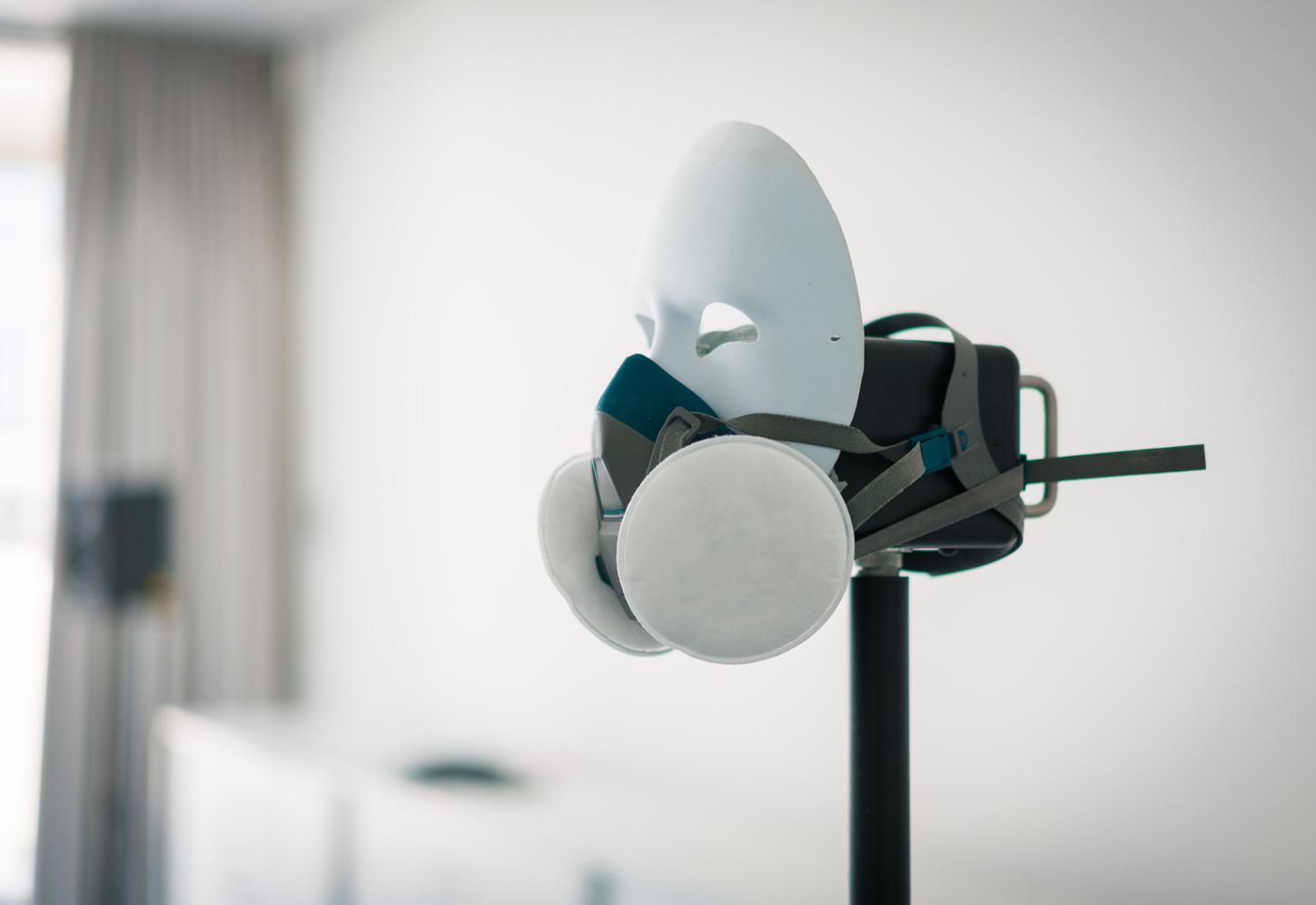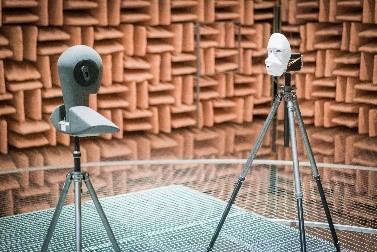Speech intelligibility with face masks
Before the coronavirus pandemic, in this country masks were worn as a sign of concealment or to carry out illicit acts. Now they have become a sign of social responsibility and protection. However, this protection also has its disadvantages: It affects the intelligibility of speech, for example. Masks worn in day-to-day life make communication more difficult by lowering the volume of speech. According to the experience of those concerned, the more extensive the protective measure, the higher the impact on speech intelligibility. In professions where people’s lives are at stake (fire brigade or hospital staff), misjudgments can be made to the extent that even lives can be endangered.
During social interaction, a concealed mouth prevents people from being able to compare movements of the mouth with facial expressions. This visual comparison is used to interpret speech and, especially for people with hearing loss, contributes significantly to speech comprehension and thus to inclusion. Interpreting facial expressions also becomes more difficult, impairing the quality of social interaction even further.
Scientists at the Fraunhofer Institute for Building Physics IBP in Stuttgart have studied the effect of ten different types of masks on acoustic speech quality. These included FFP masks, community masks, disposable masks, and Plexiglas visors. The project aims at assessing the acoustic limitations of masks with the aid of an experimental setup and evaluation system, and to develop acoustically optimized face masks. The main parameters investigated are speech intelligibility and speech volume. For this purpose, an artificial mouth (special loudspeaker) in an artificial face generates defined speech signals. The resulting speech signals with and without the masks are recorded and evaluated under a range of specific acoustic conditions.
The results show a clear impact on speech intelligibility. A background noise level of only approx. 35 dB, such as in a quiet office, is enough to impair speech intelligibility by up to 26 % when a mask is worn. On the corresponding scale (Speech Transmission Index) from 0 to 1, the value is below 0.5, indicating that speech is very difficult to understand and requires added effort on the part of the listener. Even the commonly worn FFP or community masks reduce speech intelligibility by around 10 to 15%, depending on the background noise and acoustic environmental conditions.
In situations with typical everyday noise, whether indoors or outdoors, speech transmission is between 0.35 and 0.5 for all masks tested, which is a range with noticeable impairment. The use of a mask can affect speech intelligibility to the same extent as background noise that is 10 dB louder, which is perceived as twice as loud. In other words, if wearing a face mask, the effective acoustic distance of the speaker is approximately doubled.
An exception was a Plexiglas visor, which slightly increases the volume of speech because the Plexiglas pane is excited by radiation, causing it to vibrate. However, despite the higher volume, intelligibility is reduced due to distortion of the transmitted voice frequencies.
It is still too early to sum up the optimal design of a face mask for speech communication. However, the scientists of the Fraunhofer IBP underline the importance of optimization: The consequences of poor speech intelligibility are well known, not just when it comes to inclusion and communication in professions where people’s lives are at stake. In this “new normality”, requirements to wear masks and distance rules are making speech more and more unintelligible. Research is continuing to ensure that normal speech is understood in the future.
Last modified:

